In a landscape where every mention matters, understanding the significance of tracking media coverage isn’t just insightful – it’s essential. This isn’t about mere curiosity; it’s about shaping perceptions and sculpting successful PR campaigns.
Now, picture this: your latest PR campaign is out in the wild, making waves across various platforms. But how do you know if your message is really hitting home? This is where effective media coverage tracking steps in.
Read Media Monitoring: The Ultimate Guide
It’s not just about collecting a bunch of data; it’s about deciphering insights that can fuel your success. When you’re able to see which media outlets are talking about you, what they’re saying, and how people are responding, you’re armed with the ultimate toolkit for refining your PR strategies. In short, tracking media coverage isn’t just a buzzword – it’s the compass that guides your brand toward recognition and growth.
What Even is Media Tracking?
Let’s rewind to the olden days of PR (picture Ab Fab, with a tad less booze). Back then, figuring out how well a campaign did meant leafing through stacks of worn-out newspapers and magazines, hoping to spot your client’s name.
Once you found it, a routine would kick off: get your scissors, carefully cut out the articles, and then stick them in a clippings folder with actual glue. Looking back, this process had two big problems: it was really boring, and there was a lot of room for making mistakes. Thankfully, today’s tech has given us a hand – we now have AI and clever computer programs to do these tasks for us, and they do a fantastic job.
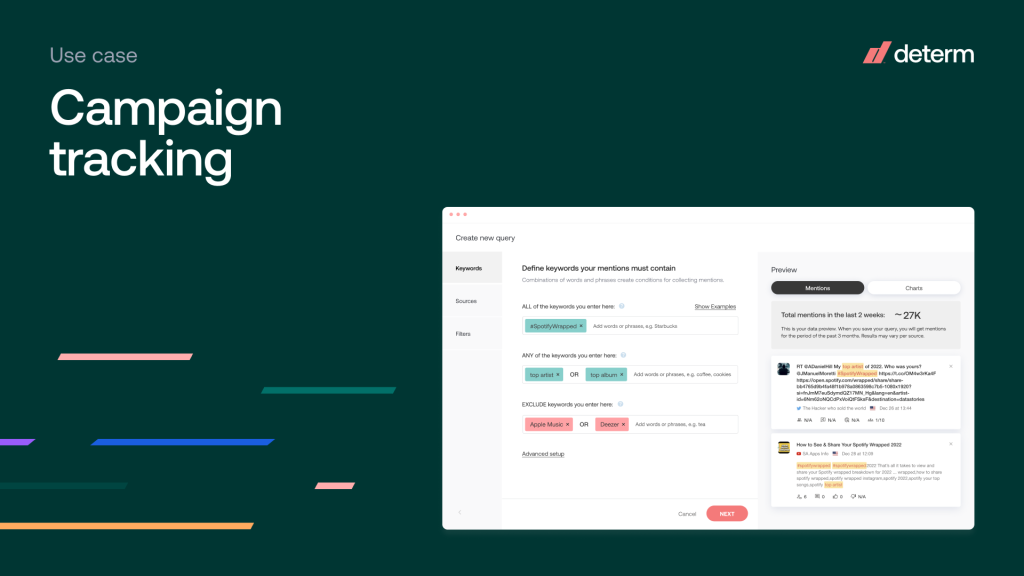
Their job is to explore all the places where your audience has interacted with your brand – be it in print, online, on social media, or even on TV and radio. And they’re here to give you special insights into how your PR campaign worked out.
Media tracking is when technology automatically scans through all sorts of media, looking for the words and topics that matter to you and your PR efforts. Now, you might be wondering, how can this really help me? Well, media tracking PR professionals in a number of ways.
6 Benefits to Tracking Media Coverage
Understanding How Your Campaign Performs
Once a campaign wraps up, your client will be eager to gauge how well their brand fared. This calls for measuring how effectively your messages resonated.
Did the campaign make a solid impact? Or was there room for it to be more focused and potent?
Here, tracking media coverage steps in, helping you decipher the fruits of your labor. By keeping tabs on performance, you gain insight into whether your efforts hit the mark. Moreover, this tracking sheds light on whether your campaigns are hitting the right spots.
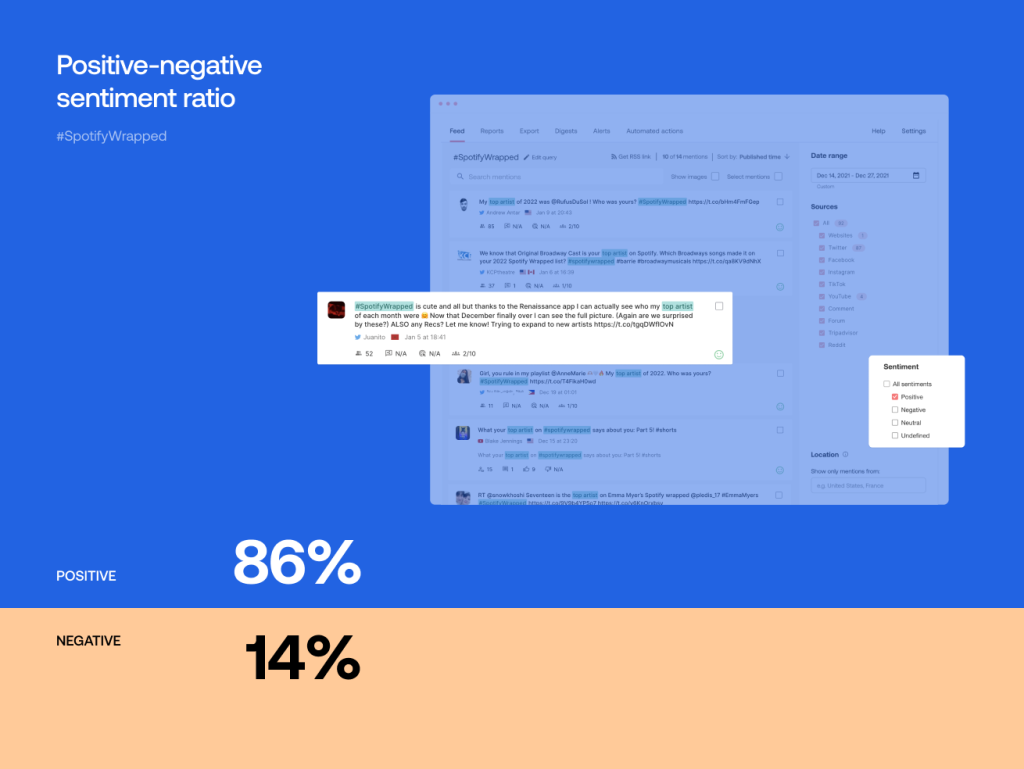
Imagine you’re promoting a groundbreaking anti-aging eye cream. If you find out that most of your buzz came from GolfingTimes.com, it’s clear you’re not reaching the right audience. Tracking unveils the journey of your campaigns and the precise platforms driving that journey. This knowledge arms you with specifics on who to target for your next endeavor. The more laser-focused your PR campaigns, the better their outcomes.
Campaign launches come with a hefty price tag. Extracting maximum value from your budget becomes paramount. And this is where a media tracking tool steps in, significantly amplifying your return on investment.
Read PR vs Marketing: 5 Main Differences Explained (And Compared)
Revitalizing Your PR Strategy
In the fiercely competitive realm of PR, making your brand or product shine amidst the masses is no small feat.
Want to infuse new life into your strategy? One smart move is to dissect past campaigns.
Why? Because studying what hit the bullseye (and what didn’t) unveils the precise components that drive campaign triumph. You can then replicate those winning aspects with confidence. But hey, just a heads-up: recycling dull campaigns won’t cut it.
Through tracking, you gain insights into the media channels that truly resonate with your brand (not all are created equal). You can also dive deeper into engaging your client’s unique audience. Armed with this treasure trove of PR intelligence, you’re ready to craft inventive approaches that draw attention to your brand.
Monitoring Your Competitors
Thanks to the convenience of a media monitoring tool, you’re not limited to only tracking media coverage of your brand’s performance. This tool enables you to discreetly observe the broader industry landscape and keep a vigilant eye on your competitors’ activities.
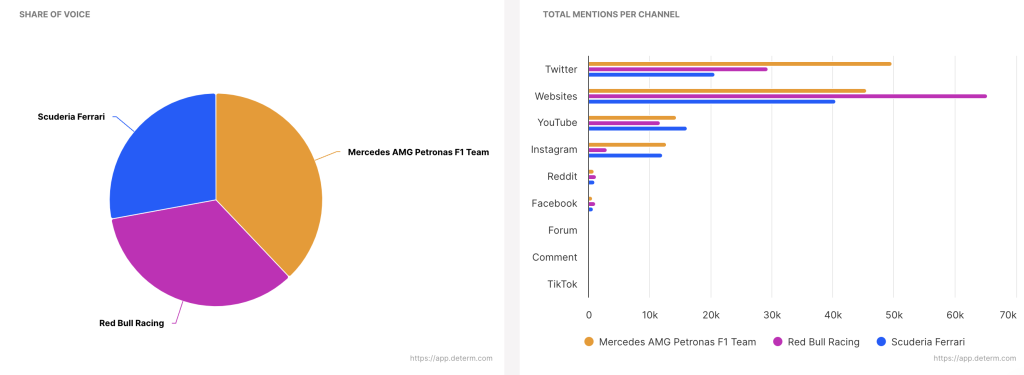
Observing your rivals can yield valuable insights. You’ll gain an understanding of their communication strategies with customers and discern which messages are resonating effectively (and which ones aren’t). Essentially, you get the chance to learn from their missteps long before they occur. Quite strategic, isn’t it?
And, of course, there’s no harm in gathering pertinent market intelligence, is there?
Measuring Media Reach
As defined by the Chartered Institute for Public Relations (CIPR), “reach” is the count of unique individuals who had an opportunity to view an “item” or a legitimate reproduction of that item through any digital medium. Although this definition might sound a bit perplexing, let’s break it down.
Think of reach as the distance covered by your brand’s message – and the number of individuals who had the potential to come across your campaign. It’s a metric that the Sales team often appreciates, but in today’s landscape, its accuracy has dwindled. While reach can tell you how many people had the chance to see your messaging, it doesn’t guarantee that they actually did.
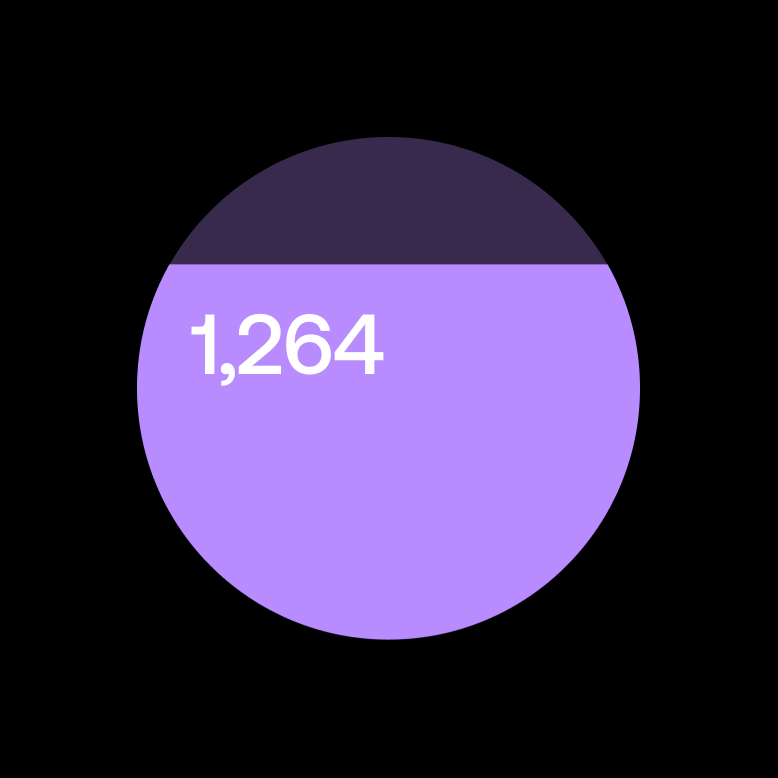
Instead, the metrics that hold more significance are: which platforms and influencers are making the most impact on my brand? Where is my audience predominantly located? And which other industries and like-minded brands do they associate with?
Delving into your customers’ preferences and communicating in the right manner holds far more substantial value.
Handling a Crisis Situation
When a campaign hits a snag, we all know that fast resolution is crucial. Failure to address it promptly could even result in losing a client. The ability to respond in real-time is one of the prime advantages of media tracking, especially in crisis scenarios – where every moment matters.
Regrettably, no matter how firmly you hold the reins on your brand’s image, preventing every lurking PR disaster is almost impossible. However, critical damage control can still be beneficial.
Let’s talk chicken.
In 2018, the beloved spicy-coated fast food haven, KFC, found itself in quite a pickle when it ran out of chicken in nearly all its 870 restaurants across the UK & Ireland. Yes, you read that right.
Though the cause remains a puzzle, KFC’s PR and marketing squads acted promptly. They countered the ensuing uproar by publishing ads in newspapers with their iconic KFC letters rearranged on trademark buckets to spell “FCK up.”
They also established a temporary webpage where customers could check their nearest restaurants’ “chicken status.” Most importantly, they devoted substantial time and effort to addressing hungry and disgruntled Colonel Sanders fans on social media daily.
Without tracking tools, KFC’s maneuver would have been near-impossible. Instead, they had a head start on crisis management, skillfully averting a potential public relations nightmare. By staying informed about public sentiments – positive or negative – and assessing their potential impact on your client, you gain the insights needed to navigate a crisis deftly and effectively.
Assessing Public Sentiments
Sentiment analysis is all the rage in the world of PR right now, and for good reason – it holds substantial power. Tracking sentiment involves unraveling the attitudes, opinions, and emotions about your brand.
Here’s an example: back before the 2012 US presidential election, the Obama administration employed sentiment analysis to gauge public opinion about their policy messages.
This allowed them to fine-tune and adjust their campaign strategy as it unfolded – and we all recall how successful that endeavor was.
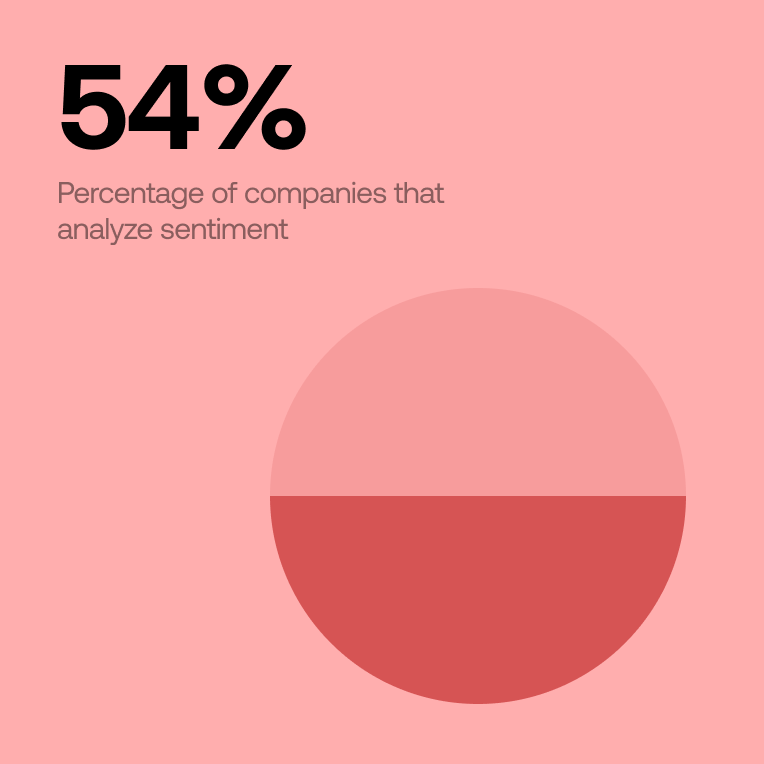
Media tracking of sentiment also serves as a valuable avenue for PR professionals to gather feedback. By utilizing media and social media monitoring, you can uncover the good, the not-so-good, and the unattractive aspects of how your brand is perceived.
And believe us, this feedback is worth its weight in gold.
Leveraged properly, it can morph into testimonials and reviews that enrich your marketing content. But more crucially, it arms you with the insights needed to craft better-informed and more precisely targeted strategies for the future.
The Best Tools for Tracking Media Coverage
Google Alerts
Google Alerts is a widely recognized news tracking tool that has become a go-to choice for individuals and professionals alike. With Google Alerts, you can effortlessly monitor the web for specific keywords or topics, and receive email notifications whenever new content matching your criteria is published.

Determ
Determ is an innovative and cutting-edge tracking media coverage tool that utilizes artificial intelligence and machine learning to provide users with real-time insights and comprehensive news monitoring capabilities. With Determ, users can track news across various sources, including online news articles, blogs, social media, and more.
The tool’s AI algorithms analyze and categorize news content, making it easy for users to filter and discover relevant information.
Determ’s intuitive dashboard presents a holistic view of news trends, sentiment analysis, and key metrics, allowing users to gain valuable insights into public opinion and emerging topics. Additionally, Determ offers customizable alerts and notifications, ensuring users never miss important news updates.
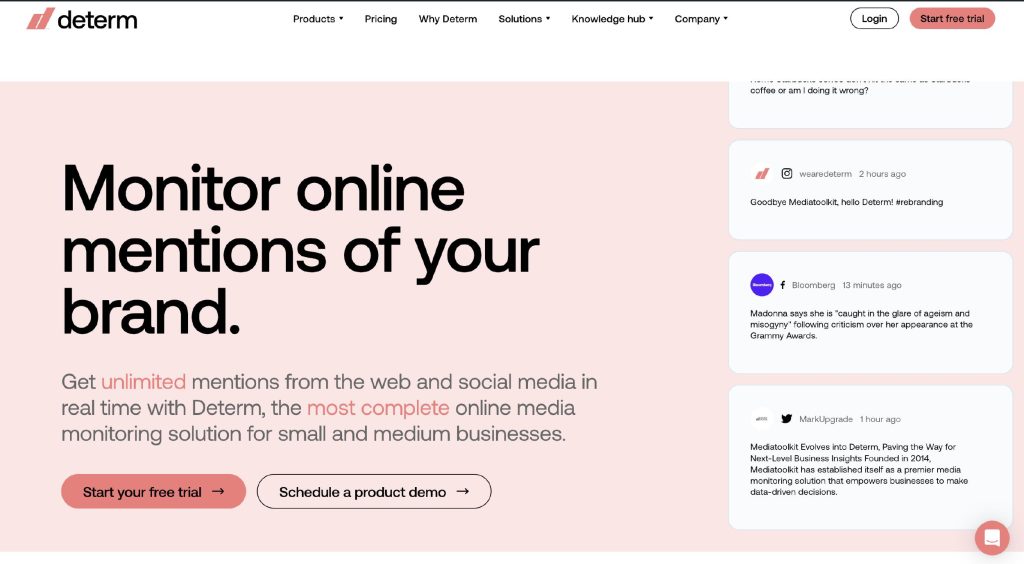
Riding on the waves of AI, Determ offers one more powerful feature – an AI assistant Synthia, that will summarize your most influential mentions and give you an overview and tips for your future actions. Quite a good start when creating a PR or marketing strategy, right?
If you want to try it out, book a demo with one of our experts.
SproutSocial
Sprout Social, although primarily known as a social media management tool, offers robust tracking features that make it an excellent choice if you’re looking for the best way to stay informed.
With Sprout Social, you can monitor and track news updates across multiple social media platforms, including Twitter, Facebook, Instagram, and LinkedIn. The tool provides comprehensive keyword monitoring and sentiment analysis, allowing you to track specific topics, hashtags, or mentions of your brand or competitors. Sprout Social’s intuitive dashboard presents real-time updates, enabling you to identify trending news and engage in timely discussions quickly.
Brandwatch
Brandwatch monitors and analyzes online conversations surrounding brands, industries, and trending topics. As many other monitoring tools, this tool offers real-time monitoring and alerts, providing users with immediate updates on news mentions relevant to their interests.
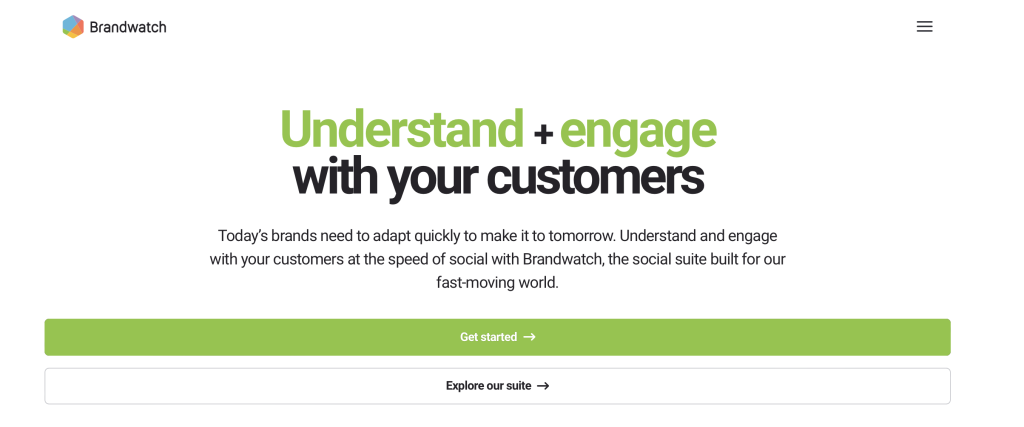
Brandwatch’s data visualization capabilities make it easy to digest and interpret large volumes of news data, allowing users to identify trends, influencers, and emerging topics. Additionally, the tool provides robust reporting features, empowering users to generate detailed insights and share comprehensive reports with stakeholders.
Read Top 5 Brandwatch Competitors: Features and Pros & Cons
Prowly
Prowly is a tool that caters specifically to public relations and media professionals. Designed to streamline PR efforts, Prowly offers an array of features to help users manage their media coverage effectively. With Prowly, users can create and maintain media lists, track journalists’ activities, and distribute press releases to targeted contacts.
The tool also provides media monitoring capabilities, allowing users to track mentions of their brand or specific keywords across online news sources. Prowly’s interface and analytics dashboard offer valuable insights into media reach, engagement, and sentiment, enabling PR professionals to measure the impact of their campaigns. Additionally, Prowly offers robust reporting features, facilitating the generation of comprehensive PR reports.
Read BrandMentions vs Determ: A Side-by-Side Comparison of Two Top Media Monitoring Tools
Conclusion
The journey through the landscape of media tracking showcases its multifaceted benefits. From decoding campaign impact to rejuvenating strategies, from assessing competition to comprehending sentiment, the facets of tracking media coverage are diverse and essential. The lessons learned from PR crises of the past underscore the necessity of real-time response, while the power of sentiment analysis underscores the significance of understanding attitudes and emotions.
In today’s information-rich environment, media tracking is no longer an option but a vital necessity. It equips PR professionals with the insights and foresight needed to navigate the complex world of public perception. The convergence of data, technology, and strategic thinking empowers brands to amplify their reach, enhance their impact, and seize opportunities with confidence. So, as you embark on your PR journey, remember that every media mention holds a story – and it’s up to you to decipher it, refine it, and ensure that your brand’s narrative shines brightly in the ever-evolving landscape of media coverage.


